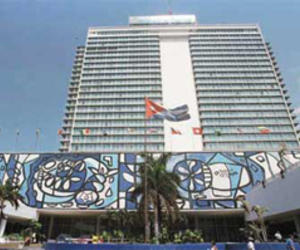National Liberation Day of Cuba on January 1, 2011
- Submitted by: manso
- Society
- 01 / 01 / 2011

January 1, 2011, 12:52pm. Cuba celebrates today its National Liberation Day.It is an island country in the Caribbean, which consists of the island of Cuba, the Isla de la Juventud, and several islands. The largest city and the country’s capital is Havana.
Cuba is one of the largest sugar-producing countries in the world with sugarcane as its largest crop by volume and value.
A second crop of commercial importance is tobacco, grown especially in the province of Pinar del Rio. Relations between Cuba and the Philippines have been in existence for centuries.
As early as the 16th century, Filipinos reached Cuba in Spanish ships and many of them settled by the banks of the Mississippi River in Louisiana.
In the 17th century, Filipinos who were brought by the Spaniards to Cuba were altar boys, catechism leaders, and church workers.
They were then called chinos. The early migration of few Filipinos to Cuba was made possible by the Manila-Acapulco Galleon Trade.
The Philippines and Cuba were both ruled by Spain for several centuries ending at the turn of the 19th century with Spain’s defeat by the United States. In 1946, diplomatic relations between the Philippines and Cuba were established.
On December 11-12, 2009, a Philippine delegation led by the Philippines’ Ambassador to Cuba visited the Cuban province of Pinar del Rio.
The purpose of this visit was to foster historical and cultural ties between Cuba and the Philippines.
Pinar del Rio was known as Nueva Filipinas (‘New Philippines) in the mid-18th century.
The delegation toured the provincial museum, the city museum of natural history, the Trinidad cigar factory, the city cathedral, and the United Nations Educational, Scientific, and Cultural Organization (UNESCO) heritage site.
We congratulate the people and government of Cuba led by H.E., President Raul Castro, and its Embassy in the Philippines, headed by H.E. Ambassador Juan Carlos Arencibia Corrales, on the occasion of their National Liberation Day. We wish them all the best and success in all their endeavors.
Source:/www.mb.com.ph/articles/295886/national-liberation-day-cuba-january-1-2011
Comments